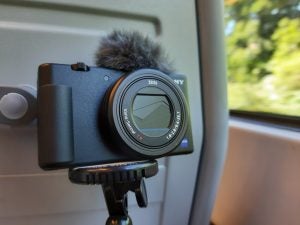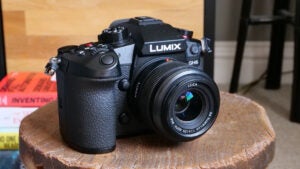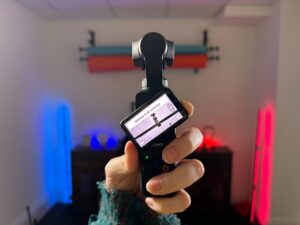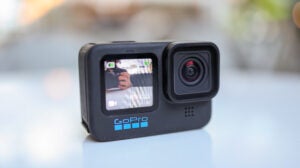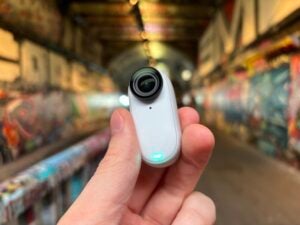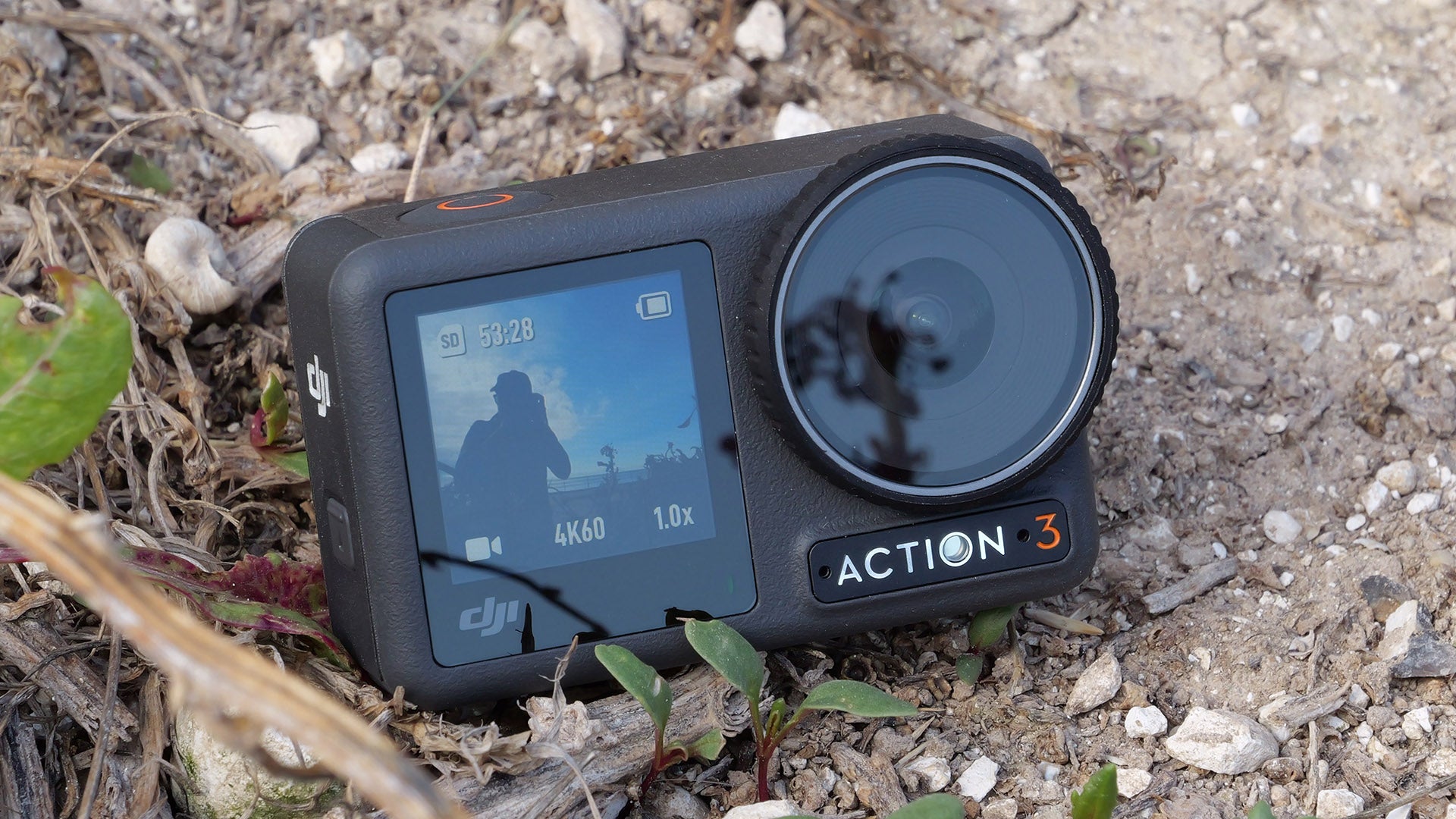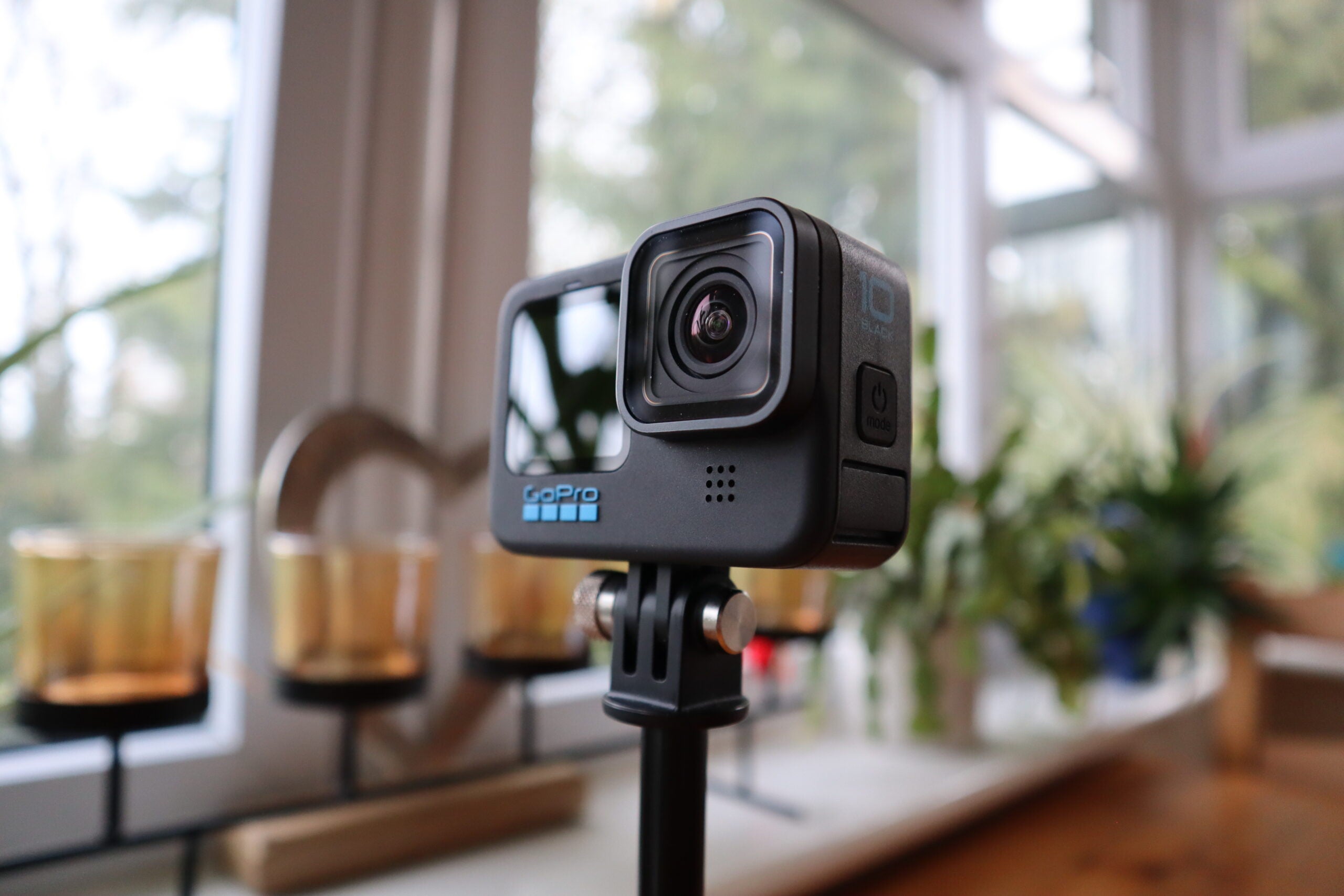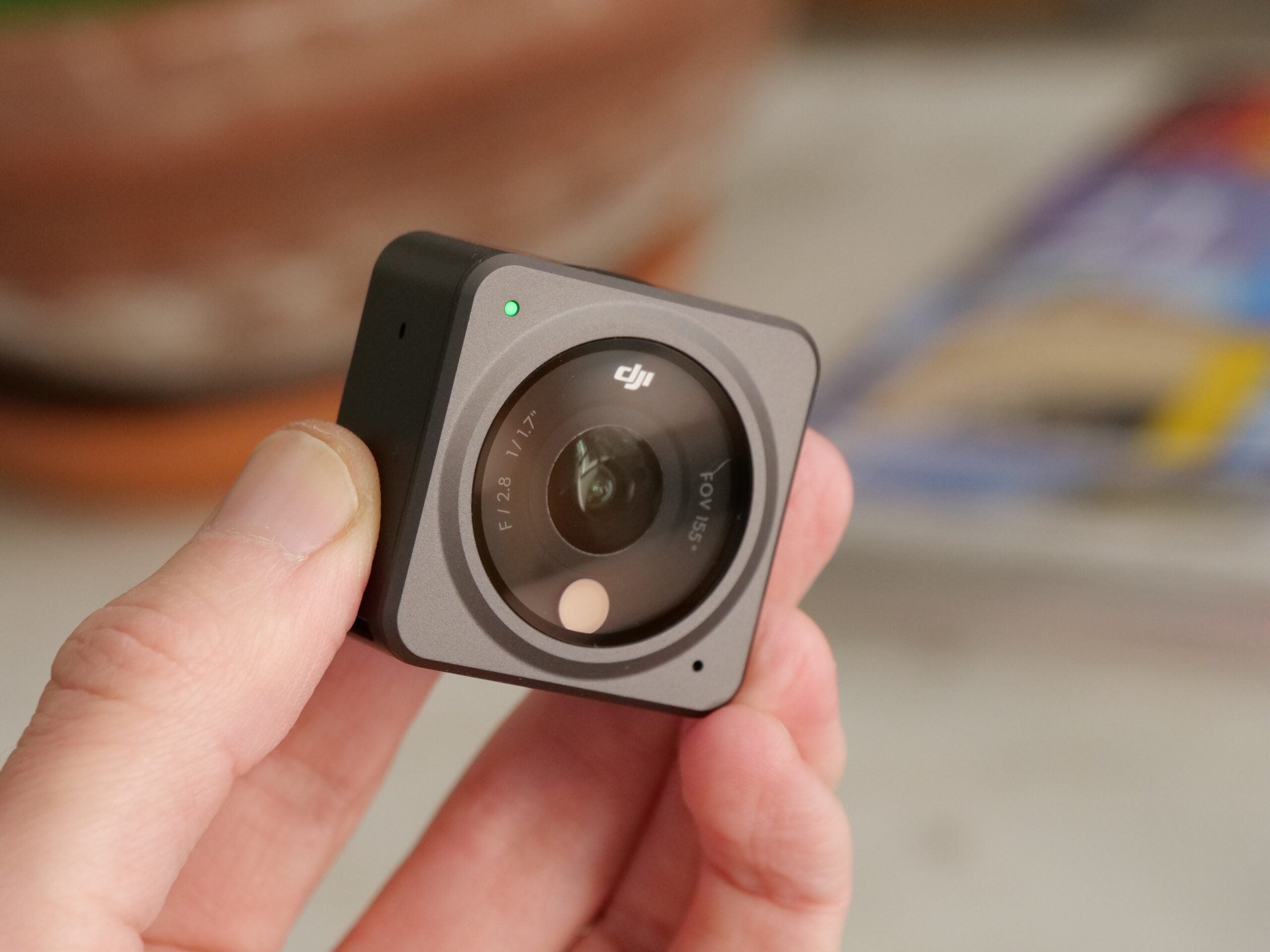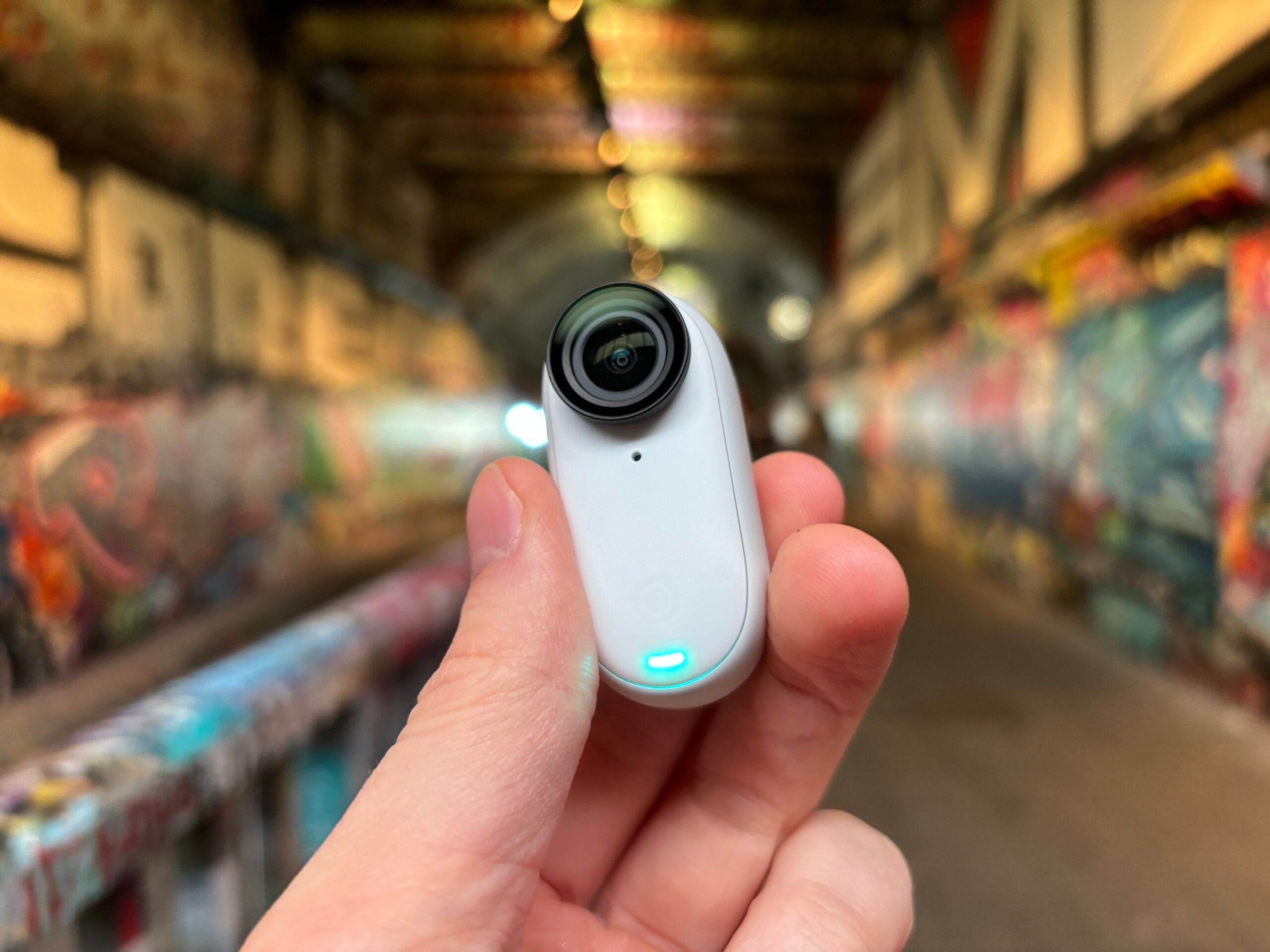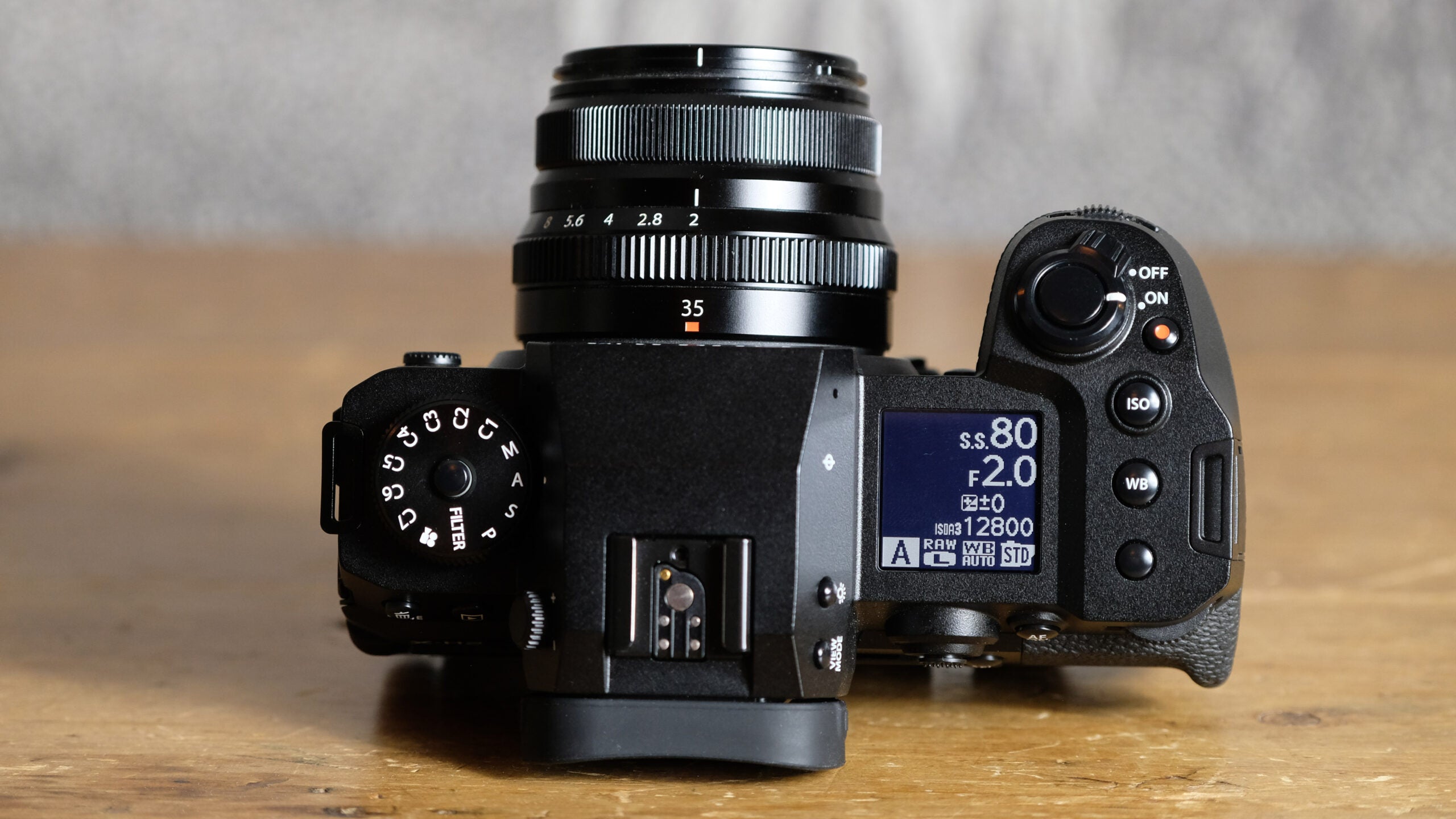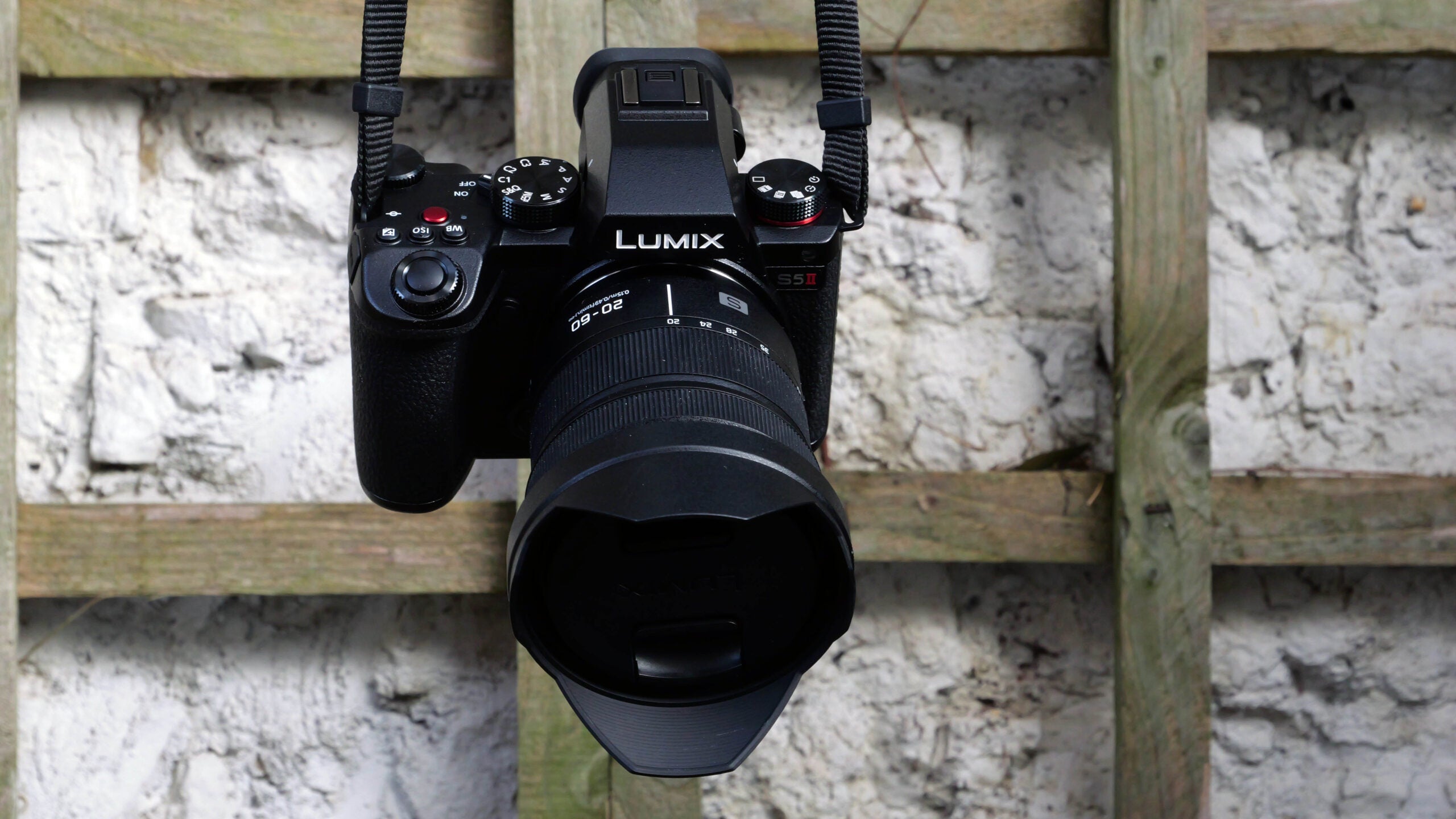Best Vlogging Camera 2024: Capture more with these cameras
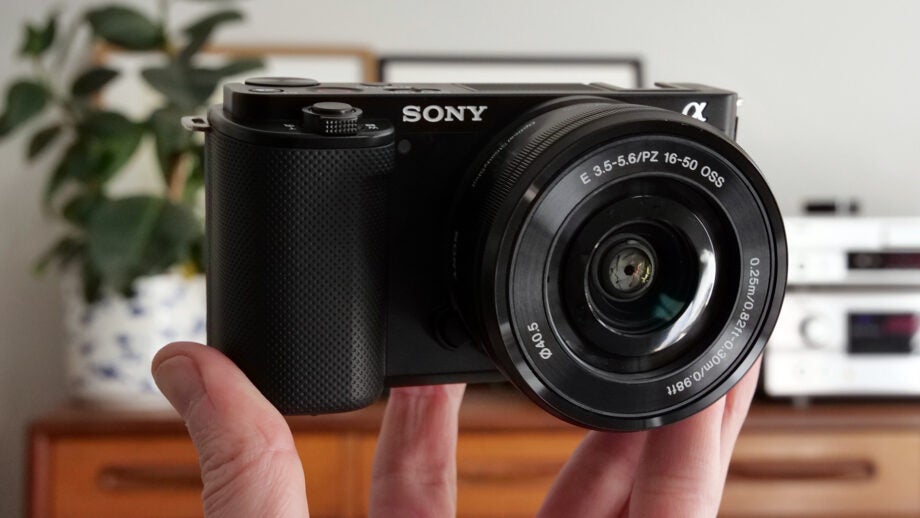
Smartphone cameras have improved rapidly over the years, but they’re rarely a match for a great standalone camera. Whether you’re an experienced YouTuber or a budding TikTok star, you can find all of our favourite vlogging cameras detailed in this guide.
Vlogging cameras pack larger sensors than smartphones, giving them an edge when it comes to dynamic range, low light performance and background blur in your videos. Many cameras also feature external microphone jacks and fully articulated touchscreens for easier framing.
Of course, there isn’t just one type of vlogging camera. We’ve covered all of the bases in this guide with a mix of entry-level mirrorless cameras, pocket-sized gimbals and well-loved action cams.
We’ve also included a list of pros and cons for each, along with links to our full, in-depth reviews. These detail our experiences with the cameras and include sample footage from them to help you choose which one is best suited to your vlogging needs.
For those specifically looking for a camera to take adventuring, make sure to visit our guide to the best action cameras. We also have guides to the best compact and mirrorless cameras for anyone interested in these areas, along with a more general guide to the very best cameras on the market right now. For a more spontaneous way to capture important moments, you can also see our guide to the best instant cameras.
Best vlogging camera at a glance
- Best entry level option: Sony ZV-E10 – check price
- Best one lens option: Sony ZV-1 – check price
- Best for video quality: Panasonic Lumix GH6 – check price
- Best for smooth video: DJI Osmo Pocket 3 – check price
- Best action camera: GoPro Hero 11 Black – check price
- Best compact vlogging camera: Insta360 Go 3 – check price
How we test
We test every camera we review thoroughly. We use set tests to compare features properly and we use it as our main device over the review period. We’ll always tell you what we find and we never, ever, accept money to review a product.
- Small and lightweight
- Good video quality and options
- Fast, accurate autofocu
- Beginner-friendly features
- No viewfinder
- Big crop with electronic image stabilisation
- Limited touchscreen functionality
- Unbelievable mic quality
- Top-tier autofocus
- Instant bokeh mode
- Can overheat indoors
- Convoluted menus that are a pain to use
- Micro-USB rather than USB-C
- Massive range of video modes
- Superb video image quality
- No-limit recording times
- Effective image stabilisation
- Easy handling
- Occasional autofocus quirks
- Some features unavailable at launch
- Smooth, detailed 4K video
- User-friendly controls
- Rotating touchscreen for vertical and horizontal filming
- No waterproofing
- The Creator Combo is expensive
- 8:7 sensor perfect for content creation
- A rich range of accessories
- Excellent dynamic range for an action camera
- Mediocre low-light performance
- Mounting doesn’t best DJI’s magnetic system
- Pricier than the main competiton
- Now shoots at 2.7K
- Vastly superior microphones
- No more overheating
- The Action Pod is great
- Low-light scenes are still too difficult
- Quite a hefty price bump

Sony ZV-E10
The best entry-level vlogging camera
Pros
- Small and lightweight
- Good video quality and options
- Fast, accurate autofocu
- Beginner-friendly features
Cons
- No viewfinder
- Big crop with electronic image stabilisation
- Limited touchscreen functionality
If you’re looking for a great vlogging camera to get started with, the Sony ZV-E10 delivers 4K video and beginner-friendly features wrapped in a lightweight package.
The mirrorless camera is packed with features to help YouTubers and Instagram stars step up their video content, including a good-sized APS-C sensor, image stabilisation, real-time autofocus tracking for the eyes and face and flexibility with Sony’s E-mount lens system.
At 343g, the ZV-E10 is one of the smallest and lightest mirrorless cameras we’ve reviewed. There’s no electronic viewfinder, but we found the 3-inch touchscreen to be bright and clear – even on sunny days. The screen also flips out to the side, making it ideal for when you need to record yourself.
The autofocus is fast and there’s a Product Showcase mode to shift the focus quickly for influencers who need to hold objects in front of the camera. We found this mode to be a little fussy at times but it was still an improvement over the standard face detection-based mode when used in these circumstances.
There’s none of the fancy in-body image stabilisation found in the A6600, but the ZV-E10 does come with SteadyShot image stabilisation. This means you get digital stabilisation as well as optical stabilisation with certain lenses.
The ZV-E10 supports clean and rich 4K at up to 30fps or softer and smoother 1080p at 60fps, which is ideal when using the Slow and Quick mode to capture slow motion video. The Sony can also produce some sharp 24.2-megapixel stills, though vlogging is the clear focus of this camera.
Reviewer: Sam Kieldsen
Full review: Sony ZV-E10
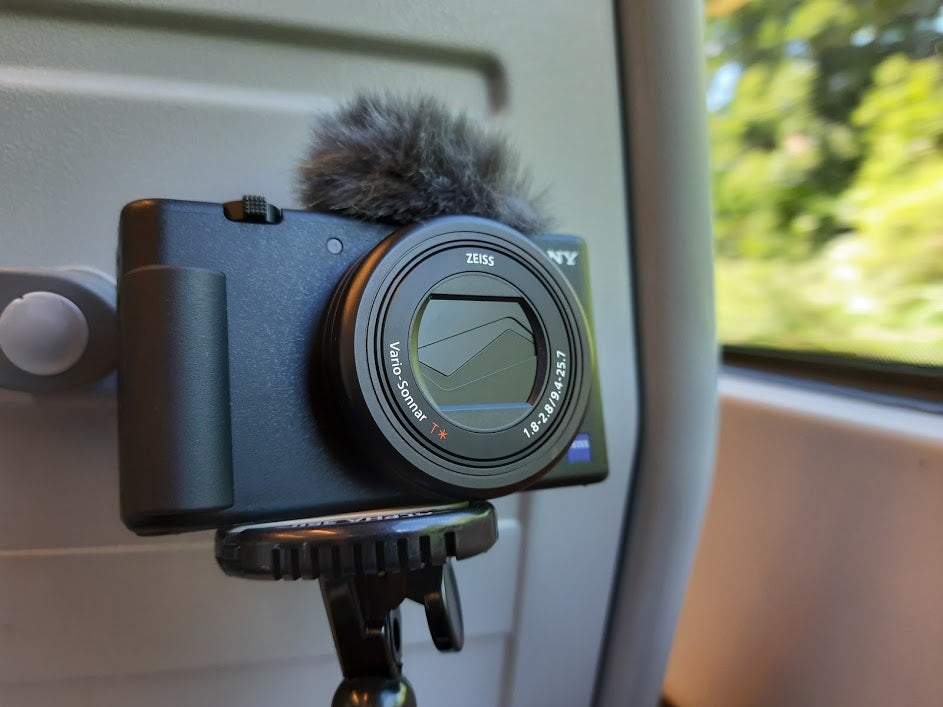
Sony ZV-1
For those content with one lens
Pros
- Unbelievable mic quality
- Top-tier autofocus
- Instant bokeh mode
Cons
- Can overheat indoors
- Convoluted menus that are a pain to use
- Micro-USB rather than USB-C
If you like the sound of the ZV-E10 but need something a little more affordable, Sony’s own ZV-1 might actually be the E10’s biggest competition.
Not only is the ZV-1 cheaper (in part due to the fact you don’t need to pick up a separate lens) but its also smaller and the built-in lens is bright and sharp, making it a great choice if you’re not bothered about swapping out your lenses with the E-mount system.
At 10.5 x 4.4 x 6cm, the ZV-1 is compact enough to slip into a bag or pocket and there’s a hotshoe on top for those who want to add an external mic, though we found the audio quality on the built-in one to be excellent. There’s also a touchscreen that flips out and rotates, allowing you to see what you’re filming at different angles.
The video quality is fantastic, with the camera capable of capturing bright and vibrant 4K footage. Photos are decent too, albeit not the focus of the ZV-1.
There are loads of handy video features included too, like a real-time bokeh mode with its own dedicated shutter for quick access and two stabilisation options: standard and active. There’s also the same Product Showcase feature found on the ZV-E10.
Unfortunately, we did find this camera had a tendency to overheat quickly when used indoors, so that’s something to be consider if you plan to film primarily in your home.
Reviewer: Thomas Deehan
Full review: Sony ZV-1
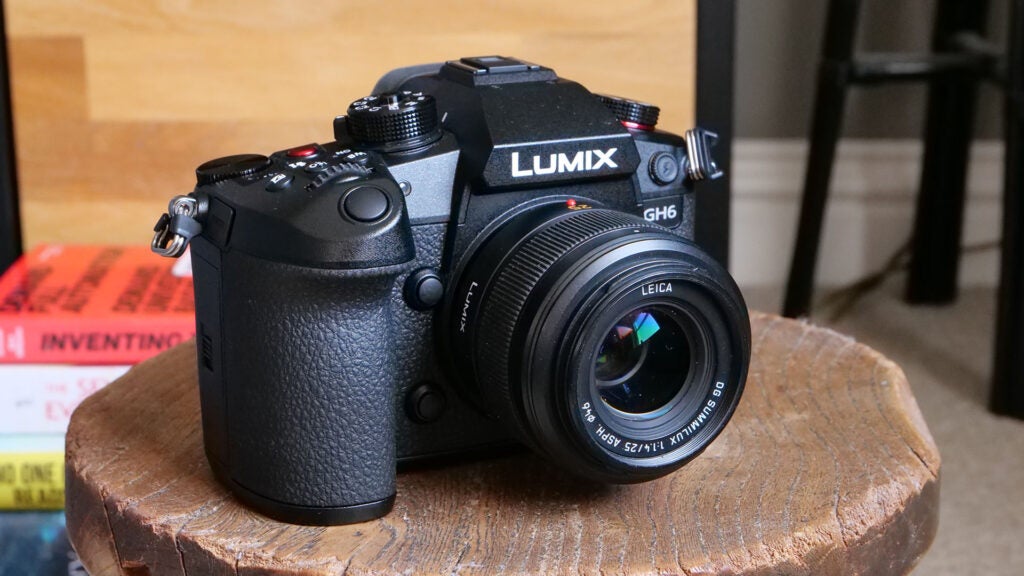
Panasonic Lumix GH6
For those in need of excellent video quality
Pros
- Massive range of video modes
- Superb video image quality
- No-limit recording times
- Effective image stabilisation
- Easy handling
Cons
- Occasional autofocus quirks
- Some features unavailable at launch
The Panasonic Lumix GH6 is a lightweight and affordable mirrorless camera that offers superb video quality and great stills. However, while the Panasonic can be used to snap images, video remains its biggest strength, making it the perfect choice for vloggers.
The Micro Four Thirds camera features a double-hinged touchscreen and a new cooling system for Panasonic’s GH series, helping it stave off any overheating issues.
The camera is also capable of going beyond the ZV-E10 and the ZV-1’s 4K resolution, and capture sharp 5.7K video at up to 60fps. There’s in-body stabilisation for up to 7.5 stops of motion compensation, which we found to be very effective, allowing us to record walk-and-talk vlogs without the background bouncing. It even managed to capture stable footage of far away subjects with a telephoto lens attached.
As far as ports go, there are inputs for headphones and a microphone, along with a full-size HDMI output for external monitoring and recording. There’s also support for CF express Type B memory cards, as well as Apple’s ProRes 422 HQ format.
One con we encountered was that the autofocus lost focus at times when tracking moving objects, though this was still an improvement from the autofocus on the GH5 II. Otherwise, the GH6 is a fantastic mirrorless camera for budding videographers and vloggers in particular.
Reviewer: Sam Kieldsen
Full review: Panasonic Lumix GH6
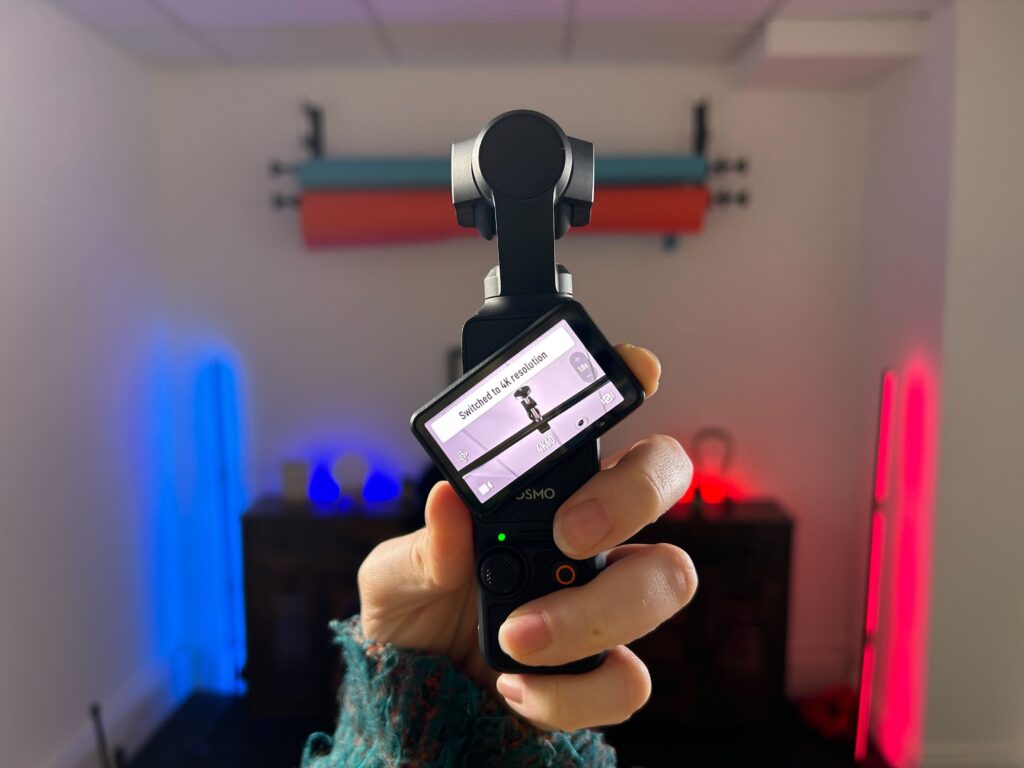
DJI Osmo Pocket 3
The best for smooth video
Pros
- Smooth, detailed 4K video
- User-friendly controls
- Rotating touchscreen for vertical and horizontal filming
Cons
- No waterproofing
- The Creator Combo is expensive
The DJI Osmo Pocket 3 is a versatile camera that makes it just as easy to shoot vertical content for TikTok as it is to capture horizontal video for YouTube.
The camera is capable of capturing sharp 4K/60p footage with bright, realistic colours, along with decent 9.4-megapixel stills. The 1-inch CMOS sensor also improves low-light performance compared to the Osmo Pocket 2, allowing you to get clearer results when shooting at night.
The Osmo Pocket 3 features an integrated gimbal to produce smooth handheld footage wherever you go with the help of three-axis mechanical stabilisation. There are also three follow modes to choose from and three rotation speeds
Anyone familiar with DJI’s Osmo Pocket cameras will find the design of the Pocket 2 comfortably familiar. The limited number of physical controls also makes it easy for new users to get started. There’s a record button for switching the camera on and recording and a joystick for controlling the gimbal movements and zoom, but the more in-depth features can be accessed via the touchscreen and the DJI Mimo app.
One striking addition to the Osmo Pocket 3’s design is the rectangular OLED display that rotates to record in different aspect ratios depending on whether you want to record horizontal or vertical content. The 2-inch touchscreen replaces the fixed square LCD screen found on the Osmo Pocket 2.
The autofocus on the Osmo Pocket 3 is better at locking onto its subject than the AF on previous Osmo Pocket cameras and ActiveTrack 6.0 introduces two new focus features – Face Auto-Detect and the Dynamic Framing mode. There’s a new Product Showcase mode reminiscent of that on the Sony ZV-E10 and ZV-1, while other features include Spinshot, Panorama, Timelapse and Slow-mo in 4K at up to 120fps.
Finally, the battery can capture up to 116 minutes of 4K/60fps video or 166 minutes of 1080p/24fps video and charges three times faster than its predecessor. We found that the Osmo Pocket 3 was able to go from 6% to 100% in less than half an hour.
Reviewer: Hannah Davies
Full Review: DJI Osmo Pocket 3
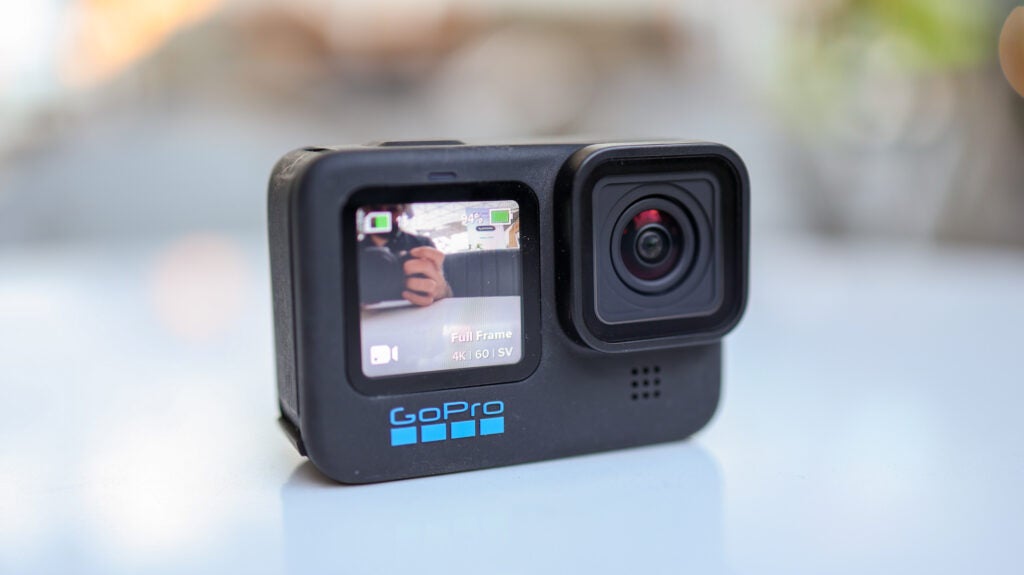
GoPro Hero 11 Black
Best action camera
Pros
- 8:7 sensor perfect for content creation
- A rich range of accessories
- Excellent dynamic range for an action camera
Cons
- Mediocre low-light performance
- Mounting doesn’t best DJI’s magnetic system
- Pricier than the main competiton
The GoPro Hero 11 Black is the best action cam available right now and the camera you should opt for if you plan on vlogging in more adventurous settings that require something compact and rugged.
The Hero 11 Black is physically very similar to its predecessor, the Hero 10 Black. The two cameras share the same dimensions, dual-screen design and mods, meaning you can use any existing accessories you might have to upgrade the latest GoPro.
The camera has two displays, a 2.27-inch touchscreen on the back and a 1.4-inch non-touch display on the front. If you’re looking for touch displays all-around, you might prefer the DJI Osmo Action 3.
The Action 3 also has better waterproofing than the Hero 11 Black, allowing it to plunge up to 16m compared to the GoPro’s 10m limit. With that said, for many vloggers, 10m will be more than enough to get great looking underwater shots. GoPro also sells a protective camera housing that supports depths of up to 60m for deep-water divers.
When it comes to resolution, the Hero 11 Black is able to produce up to 5.3K/30fps (or 4K/60fps) video and 27-megapixel images, putting the GoPro just behind the 5.7K/60fps Panasonic Lumix GH6 in terms of video quality.
The new 1/1.9-inch sensor allows content creators to capture an 8:7 aspect ratio which can easily be cropped with the GoPro Quik app for sharing clips on social media sites like TikTok, Instagram and YouTube.
Shoot at 16:9 and you’ll be able to capture even smoother video, including 5.3K/60fps, 4K/120fps and 2.7K/240fps. Furthermore, 5.3K capture is now supported by 360-degree horizon levelling, and GoPro’s image stabilisation is excellent as always.
Finally, the Hero 11 Black benefits from a longer battery life compared to its predecessors.
If you’re in need of a vlogging camera that can handle more extreme environments, the newest GoPro is certainly worth a look.
Reviewer: Basil Kronfli
Full Review: GoPro Hero 11 Black

Insta360 Go 3
Best compact vlogging camera
Pros
- Now shoots at 2.7K
- Vastly superior microphones
- No more overheating
- The Action Pod is great
Cons
- Low-light scenes are still too difficult
- Quite a hefty price bump
For any vloggers out there who prefer to travel light and absolutely abhor the idea of carrying around a cumbersome piece of kit, the compact Insta360 Go 3 will feel like the perfect workaround.
This thumb-sized camera packs a ton of tech into its miniature stature, and even with the included Action Pod in tow, you can easily fit the Insta360 Go 3 in a jacket pocket, making it quickly accessible for a bit of vlogging on the go.
In spite of its smaller size however, the Go 3 still manages to shoot surprisingly colourful video with a resolution cap of 2.7K. That might be an issue for any professional level content creators, but if you’re just starting out or aren’t too fussed about shooting in 4K then you’ll get on just fine.
Unlike its predecessor, it’s now much easier to see the framing of your content as you film thanks to the flip-out screen on the Action Pod, which transforms the Insta360 Go 3 into a more traditional action camera with touchscreen controls.
Because the Go 3 is so compact, you can get quite creative with your shots in ways that just wouldn’t be possible with larger cameras. For instance, you could place the Go 3 in a cupboard to film yourself searching for your favourite cup, and that’s before mentioning the various accessories that can be paired with it, such as the magnetic necklace for POV shots.
Like most action cameras, the Go 3 does struggle with low-light settings so do bear that in mind if you plan on filming any night-time shots. Still, in almost every scenario the Go 3 does a tremendous job of recording audio, even in crowded areas, as it can hone in on your voice. For any entry-level creators, the Insta360 Go 3 is a great compact camera to invest in.
Reviewer: Thomas Deehan
Full Review: Insta360 Go 3
We also considered…
We’ve reviewed
See all reviewsFAQs
The GoPro Hero 10 Black is the best option for challenging environments like these.
Every camera on this list is capable of capturing 4K video, with the GoPro going up to 5.3K and the GH6 as far as 5.7K.



